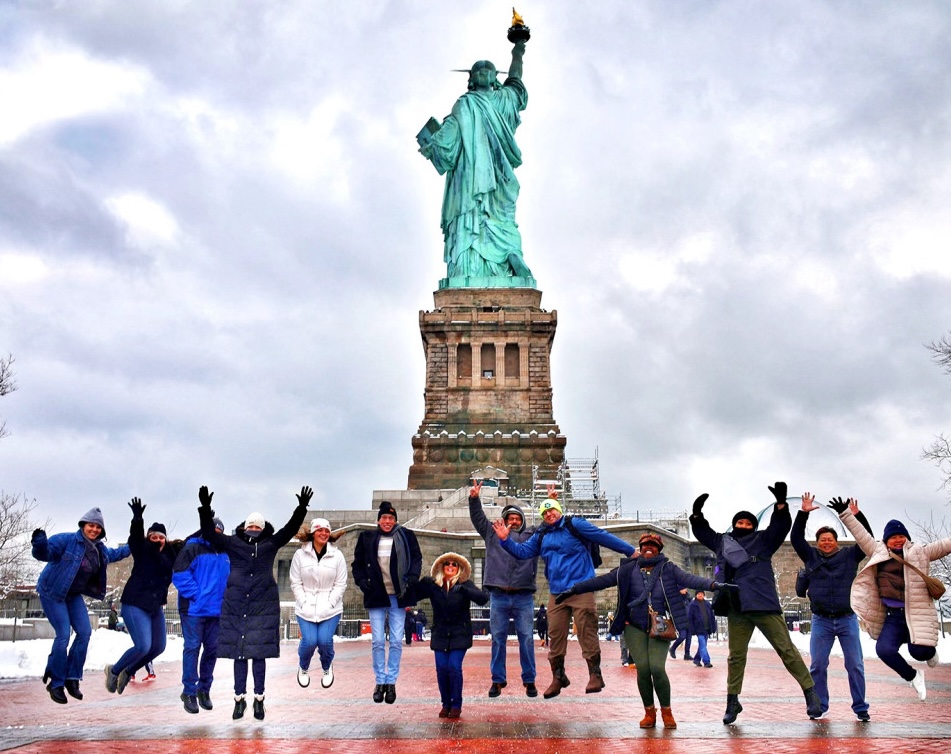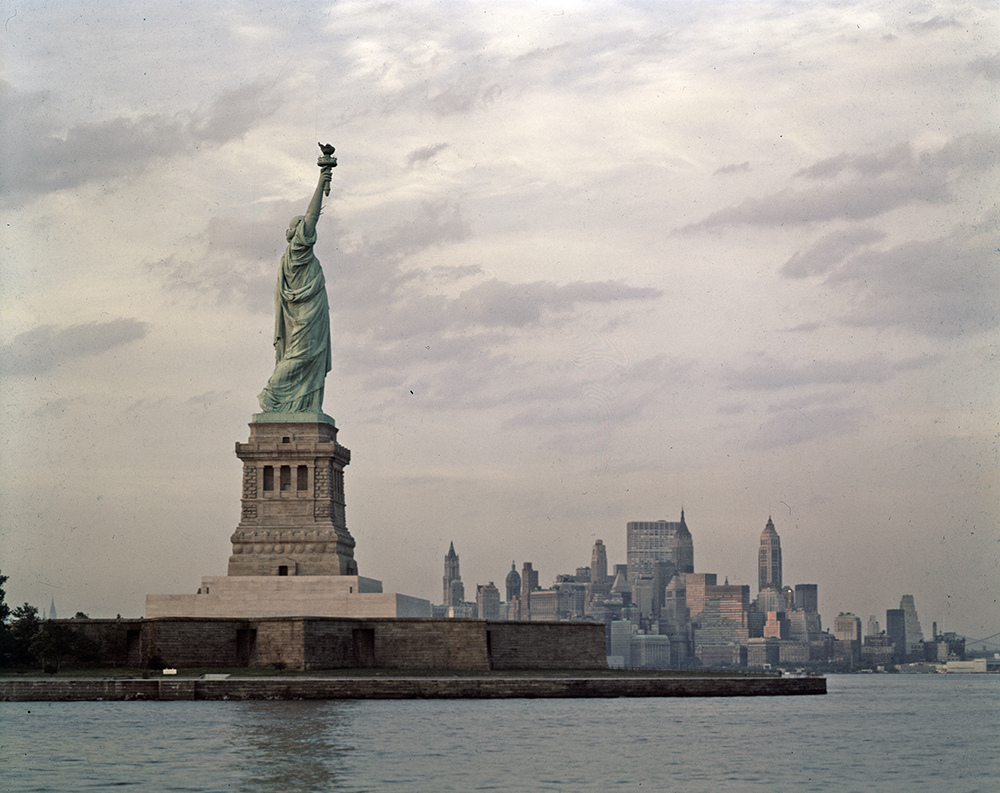
The Statue of Liberty is one of the most prominent monuments in the world, but few people know its connection to Civil Rights, slavery, and emancipation. Visitors travel from all over to see the magnificent structure in New York, bringing in roughly 4.5 million people every year. Yet the original meaning behind the Statue of Liberty may not be as well-known as Lady Liberty herself.
The statue came to New York in 1886 as a symbol of liberty and freedom two decades after the American Civil War. Most people associate the monument with immigrants arriving at the New York Harbor. However, many don’t know that the creators behind the statue originally wanted it to honor the end of slavery.
It wasn’t until six years after the statue was unveiled in New York that Ellis Island opened, allowing for millions of immigrants to make their way through the inspection station and into America. The bronze plaque along the pedestal of the statue was then later added in 1903, displaying the recognized line from “The New Colossus,” a poem by Emma Lazarus:
“Give me your tired, your poor, your huddled masses yearning to breathe free.”
In this post, we’ll uncover the original idea behind the Statue of Liberty, including how she first came into being, what her creators wanted her to symbolize relating to slavery and freedom, and the backlash of the final version.
The original idea for the Statue of Liberty
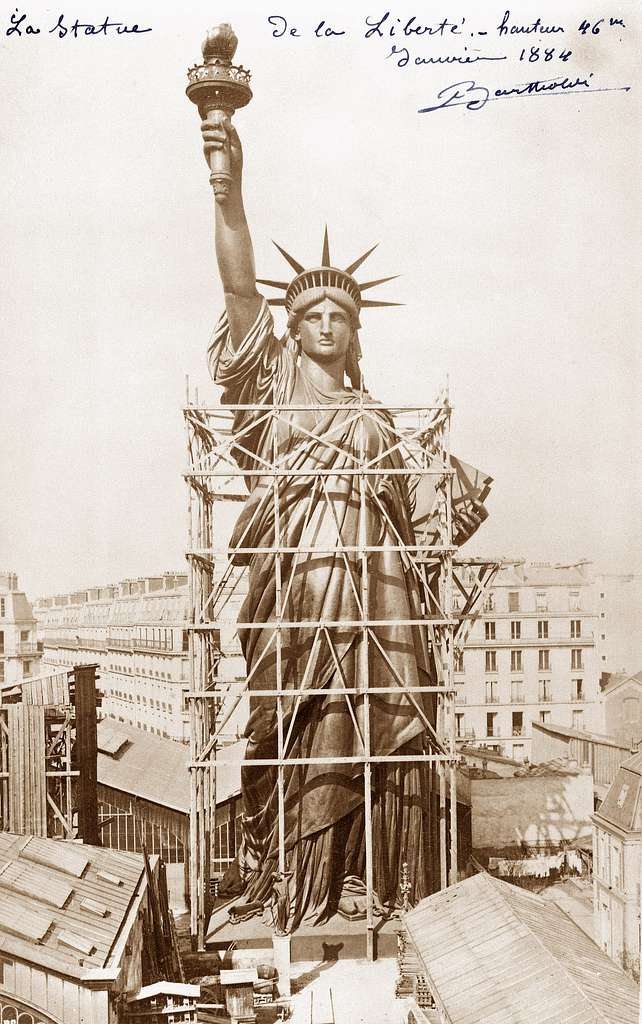
Édouard de Laboulaye was the French architect behind the Statue of Liberty and an activist for the abolition of slavery.
As a member of the Union League Club and co-founder of the French Anti-Slavery Society, he had hoped to create the Statue of Liberty for America not only to praise the two countries for coming together but also to show his gratitude toward President Abraham Lincoln’s fight against slavery.
The Statue: Before and after
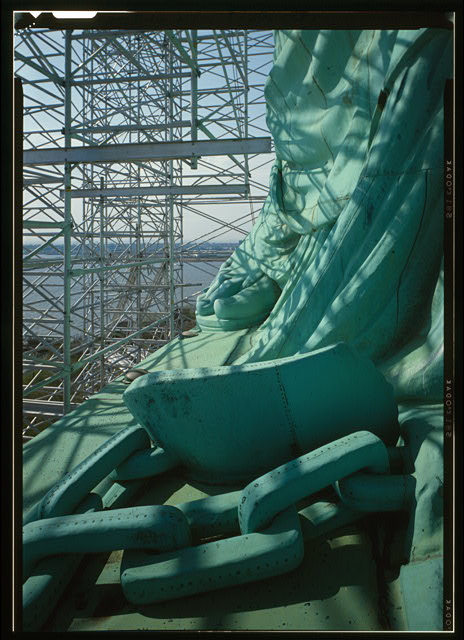
With the help of sculptor Frédéric-Auguste Bartholdi, the original idea for the statue was revealed in 1870. In this version, the statue keeps Lady Liberty’s right hand in the familiar position we see today — raised high in the air holding the infamous illuminated torch. Her left hand however, carried broken shackles, paying tribute to the end of slavery. This original idea was said to be a nod to Libertas, the Roman goddess who wore a Phrygian cap similar to what a freed Roman slave wore.
The statue we see today is a bit different. Instead of broken shackles held in her left hand, Lady Liberty now holds a massive tablet that measures more than 23 feet long with the Roman numerals for July 4, 1776, inscribed on the front signifying American Independence Day.
Bartholdi didn’t remove the broken shackles completely from the statue. They can now be found at Lady Liberty’s feet under the drapery but are hidden for most to see.
Choosing the location on Bedloe’s Island
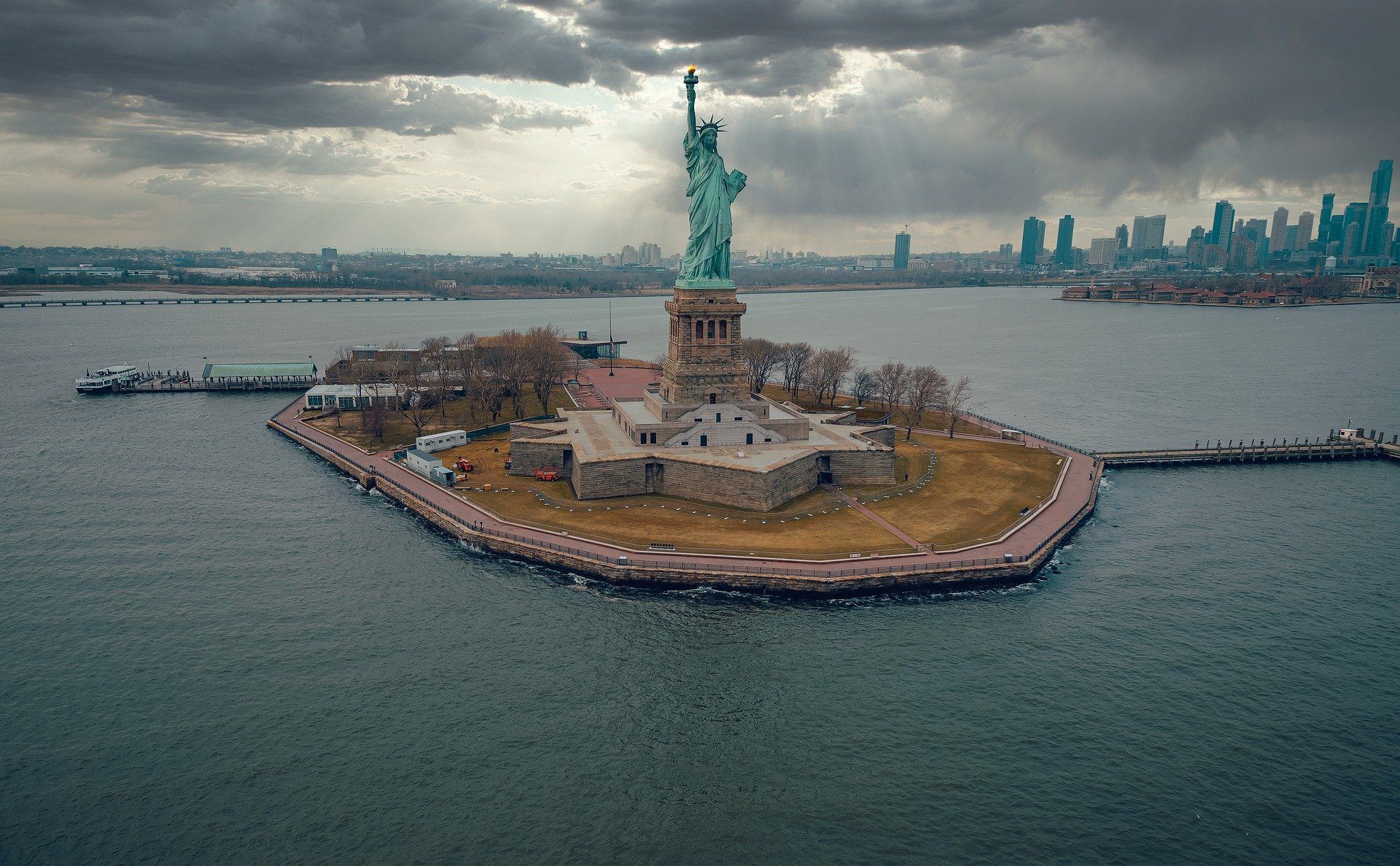
Bartholdi came across Bedloe’s Island while on the New York Harbor during one of his many fundraising trips to America — which included touring around with the statue’s torch. Once an area used for food by the Lenape natives and Dutch settlers, the island later became property of the military and was home to Fort Wood. The fort has since been repurposed as the base for the statue’s large pedestal.
In 1884, the statue was completed in Paris by Bartholdi, while architect Richard Morris Hunt was busy in America designing that very pedestal made of granite for Lady Liberty to stand on.
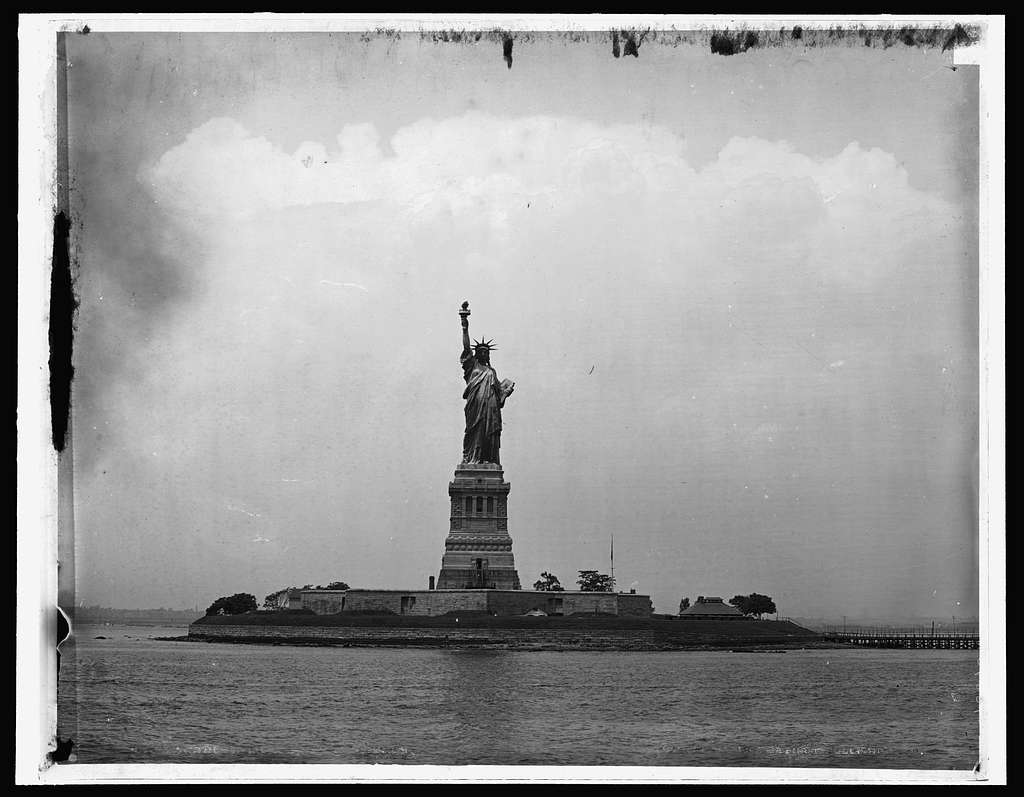
In order to make the trip to New York, the statue set sail on the Atlantic but not before being broken down into much smaller pieces (350 to be exact) and placed in over 200 separate crates. The statue remained in these pieces upon its arrival on June 17, 1885 — just over two months after the Civil War ended — while waiting for the pedestal to be completed, which came nearly a year after.
On October 28, 1886, the statue was revealed to the public as “Liberty Enlightening the World.” The celebration was grand as fireworks shot up in the sky over the harbor and Bartholdi himself stood on the top of the statue waving a French flag.
Criticism of the Statue of Liberty
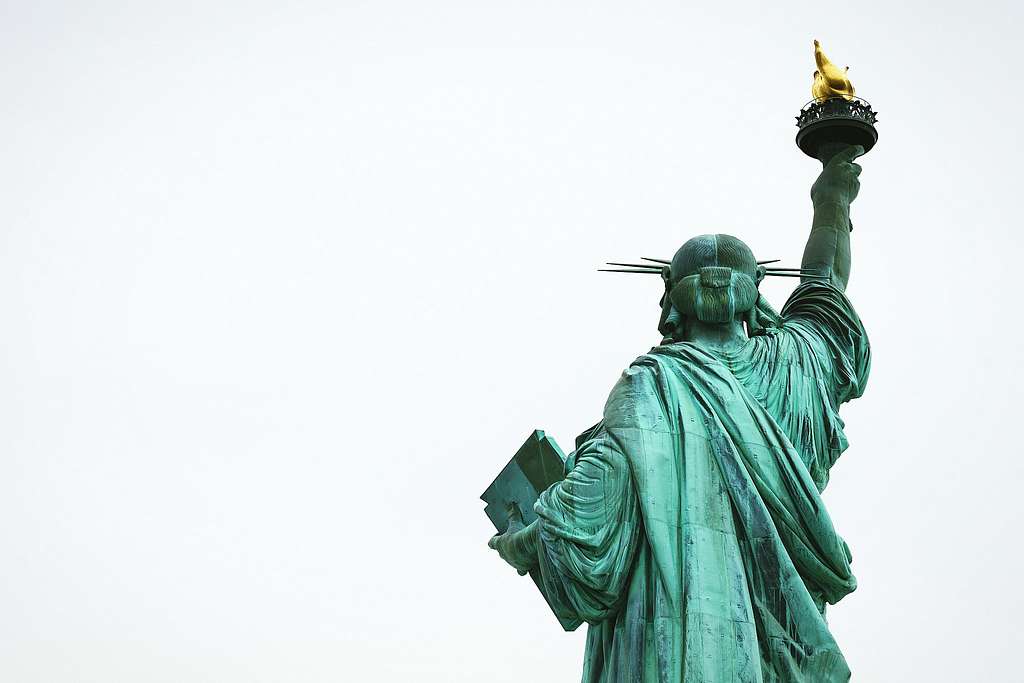
Not everyone was excited about the arrival of the Statue of Liberty. While the monument was meant to express freedom and justice for all people in the country, African Americans were still facing racism and discrimination every day.
During that time, women still didn’t have the right to vote and yet the statue portrays a woman as the face of America’s political liberty. The notion of liberty for all left many communities feeling excluded and doubtful about the true meaning behind the statue.
The Statue of Liberty: Its many meanings
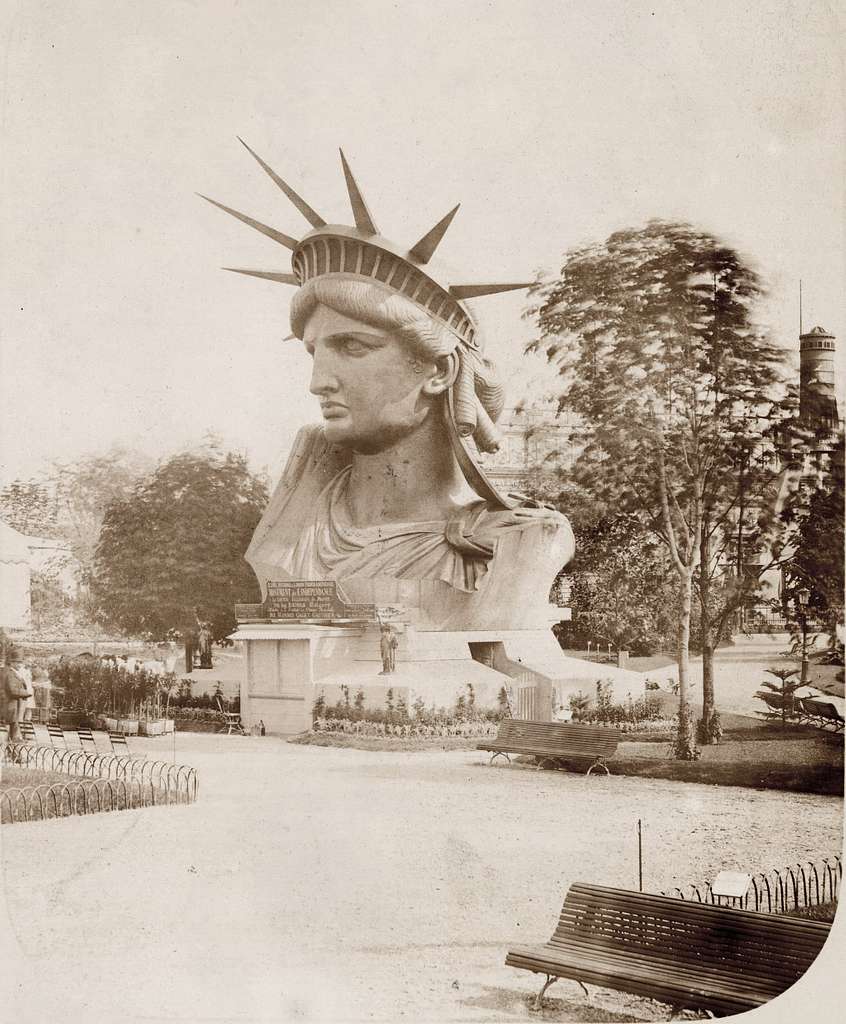
The Statue of Liberty has an interesting history, and we love sharing all about it on our guided tour. While its meaning may have changed since its original inception, unraveling its past now helps us learn more about the creators’ real intentions and appreciate everything this statue has the power to stand for.
There is no denying the Statue of Liberty is an influential monument. Anyone who has seen it in person knows what an impressive sight it is, standing out there along the New York Harbor. Lady Liberty represents everything we want in our country: freedom and liberty for everyone. By discovering how she really came to be, we can only hope for a better society for not just some but all communities.
Want to uncover more history about the Statue of Liberty? Read what it’s like to visit the Statue of Liberty Museum where you can experience the history of the statue with your own eyes.
